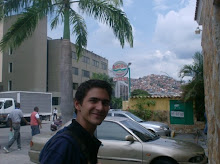 Sometime is good to have a person in your field you look up to, because you can have an example about how you can improve ourselves, our lives, our dreams and targets. Well, for me that person can be:“Thomas Alva Edison” why? because one of my dreams is to make an invention or maybe more and be a realy important person for the humamity.
Sometime is good to have a person in your field you look up to, because you can have an example about how you can improve ourselves, our lives, our dreams and targets. Well, for me that person can be:“Thomas Alva Edison” why? because one of my dreams is to make an invention or maybe more and be a realy important person for the humamity. “Thomas Alva Edison” Edison patented 1,093 inventions in his lifetime, earning him the nickname "The Wizard of Menlo Park." The most famous of his inventions was an incandescent light bulb. Besides the light bulb, Edison developed the phonograph and the kinetoscope, a small box for viewing moving films. He also improved upon the original design of the stock ticker, the telegraph, and Alexander Graham Bell's telephone. Edison was quoted as saying, "Genius is one percent inspiration and 99 percent perspiration."
He was born on February 11, 1847 in Milan, Ohio; the seventh and last child of Samuel and Nancy Edison. When Edison was seven his family moved to Port Huron, Michigan. Edison lived here until he struck out on his own at the age of sixteen. Edison had very little formal education as a child, attending school only for a few months. He was taught reading, writing, and arithmetic by his mother, but was always a very curious child and taught himself much by reading on his own. This belief in self-improvement remained throughout his life.
Work as a Telegrapher
Edison began working at an early age, as most boys did at the time. At thirteen he took a job as a newsboy, selling newspapers and candy on the local railroad that ran through Port Huron to Detroit. He seems to have spent much of his free time reading scientific, and technical books, and also had the opportunity at this time to learn how to operate a telegraph. By the time he was sixteen, Edison was proficient enough to work as a telegrapher full time.
First Patent
The development of the telegraph was the first step in the communication revolution, and the telegraph industry expanded rapidly in the second half of the 19th century. This rapid growth gave Edison and others like him a chance to travel, see the country, and gain experience. Edison worked in a number of cities throughout the United States before arriving in Boston in 1868. Here Edison began to change his profession from telegrapher to inventor. He received his first patent on an electric vote recorder, a device intended for use by elected bodies such as Congress to speed the voting process. This invention was a commercial failure. Edison resolved that in the future he would only invent things that he was certain the public would want.
Marriage to Mary Stilwell
Edison moved to New York City in 1869. He continued to work on inventions related to the telegraph, and developed his first successful invention, an improved stock ticker called the "Universal Stock Printer". For this and some related inventions Edison was paid $40,000. This gave Edison the money he needed to set up his first small laboratory and manufacturing facility in Newark, New Jersey in 1871. During the next five years, Edison worked in Newark inventing and manufacturing devices that greatly improved the speed and efficiency of the telegraph. He also found to time to get married to Mary Stilwell and start a family.
Move to Menlo Park
In 1876 Edison sold all his Newark manufacturing concerns and moved his family and staff of assistants to the small village of Menlo Park, twenty-five miles southwest of New York City. Edison established a new facility containing all the equipment necessary to work on any invention. This research and development laboratory was the first of its kind anywhere; the model for later, modern facilities such as Bell Laboratories, this is sometimes considered to be Edison's greatest invention. Here Edison began to change the world.
The first great invention developed by Edison in Menlo Park was the tin foil phonograph. The first machine that could record and reproduce sound created a sensation and brought Edison international fame. Edison toured the country with the tin foil phonograph, and was invited to the White House to demonstrate it to President Rutherford B. Hayes in April 1878.
The Inventions of Thomas Edison:









